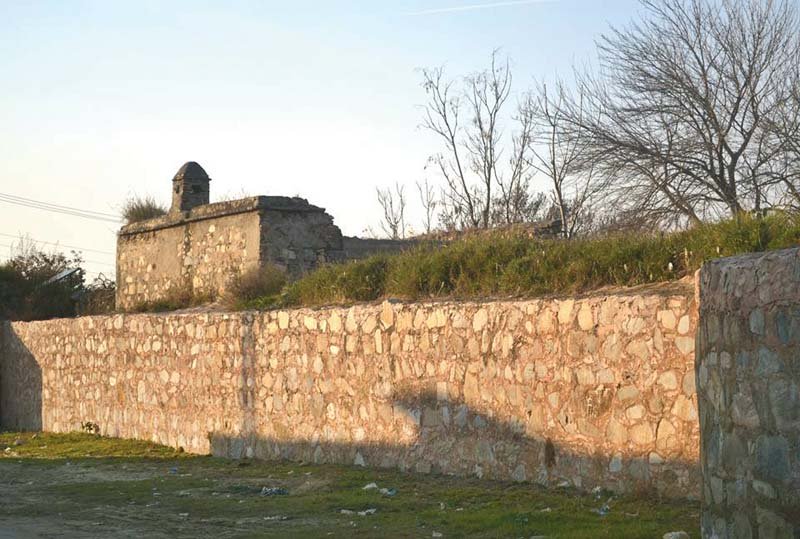
Though few understand the real historic significance of Hund, one of the greatest archaeological sites of the country, it has nonetheless been plagued by relic hunters. Also, modern civilisation closing in on the ancient structures, erected by some of the greatest rulers to set foot in the subcontinent, has not helped its preservation.
Asif Raza, a young archaeologist in charge of Hund Museum, says the site was the third and final capital of Gandhara Civilization after Peshawar and Charsadda. It was later conquered by Muslim invaders led by Mahmud of Ghaznavi in 11th century CE. Talking about the past glory of Hund, Raza adds it used to be the winter capital of the Hindu Shahi rulers in 9th century CE.
Later in 1586, Mughal Emperor Akbar constructed a fort that still stands in the area, albeit dilapidated. The fort is situated just outside the museum, but trappings of urban construction are closing in. Villagers have built houses, encroaching on the historic area.
According to archaeologists, Akbar constructed the fort for military use and it is made of small bricks and stones. “Syed Ahmad Barelvi had taken refuge inside the fort during his wars with Sikhs,” says Raza.
Fancying ancient ties
However, another key chapter of Hund’s history is many believe it to be the point at which Alexander the Great crossed the Indus River with thousands of soldiers to advance on Taxila. This site is located on the bank of the river amid the agricultural fields of Swabi.
A Corinthian column, an example of Greek and Roman architecture, was recently added to the museum to symbolise the presence of Alexander the Great in the BCE. The column, erected on the premises of the museum, can be seen from far away. Hund lies 15 kilometres from Attock Fort on the northern side, while the historically important Chota Lahor is some 10 kilometres to its south.
However, there are no actual physical remains or ruins to show Alexander crossed the river at this point.
The Kushan Empire
Recent excavations around Hund Museum date the history of the area back to the Kushan Empire in the 1st century CE. The coins, statues and other relics recovered were the work of the Hunds. The search is still on by archaeologists to find evidence of Alexander’s crossing.

There are other important discoveries such as several water wells from the Hindu Shahi period. The well is finished on the inside with beautiful stone masonry. However, it is also under threat from encroachments and relic hunters.
“During excavations on the premises of the museum, we discovered the remains of a fort from ancient times,” adds Raza “The evidence shows Iranian king Kharazam Shah was followed by Mongol ruler Genghis Khan to this fort.”
Though the archaeology department has not stopped the encroachment of sites around the fort, some efforts are afoot to preserve the structure. Authorities have been able to carry out certain renovation work.
“We are trying to have legislation passed to impose harsh punishments and fines on those damaging archaeological sites for relics,” says K-P Archaeology Director Abdul Samad. He says the department is taking all measures to protect historic sites.
Published in The Express Tribune, January 22nd, 2016.

















COMMENTS
Comments are moderated and generally will be posted if they are on-topic and not abusive.
For more information, please see our Comments FAQ